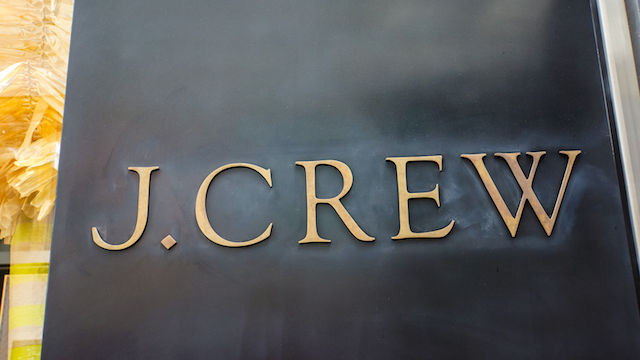US fashion-retailing icon J Crew has collapsed under the weight of US$2 billion of debt and with all 492 stores closed due to the Covid-19 epidemic.
The company, founded in 1947, entered Chapter 11 bankruptcy protection this week allowing it to restructure its debt and business operations to survive in the post Covid-19 era.
In a letter to customers, the company reassured it was business as usual during the bankruptcy process with e-commerce sites of its namesake brand and its denim label Madewell continuing to operate.
“We are there for our customers and fully operational throughout this restructuring process. We will continue operating under the Covid response measures currently in place and look forward to reopening our stores in accordance with CDC (US Centers for Disease Control) guidance as quickly and safely as possible.”
Much of J Crew’s crippling debt relates to the company’s acquisition by private-equity investment companies TPG Capital and Leonard Green & Partners back in 2011. Under the Chapter 11 process, $1.65 billion of the company’s debt will be converted into equity
“This agreement with our lenders represents a critical milestone in the ongoing process to transform our business with the goal of driving long-term, sustainable growth for J. Crew and further enhancing Madewell’s growth momentum,” said CEO Jan Singer.
Neil Saunders, MD at GlobalData Retail, said that although J Crew had been making progress in reducing its losses, the company still ended its last fiscal year $78.8 million in the red.
“The primary source of this financial woe is the $1.7 billion of long-term debt that sits on the company’s balance sheet like a millstone around its neck. Quite simply this is crippling the business which, at operating level, is profitable.”
Saunders described the move into Chapter 11 as “prudent” suggesting it should have been done years ago.
“The coronavirus crisis has forced the situation to a head. It has also given J Crew some justification to ask lenders to make the unpalatable choice of having their debt converted into equity. In the current trading environment, the alternative would have been default, putting J Crew on the path to liquidation.”
However, Saunders warns that when J Crew emerges from Chapter 11 – and the pandemic – it has other challenges to overcome.
“The J Crew brand still isn’t resonating with consumers – especially across the full-price part of the business. J Crew’s products are not terrible in either quality or design. However, ranges are samey and lack the embellishments and twists of more contemporary brands that would allow them to stand out. The consequence of this is that a growing number of shoppers see J Crew as both boring and bad value for money and refuse to pay full price for garments.”
Madewell, he says, is performing better, with sales up strongly, driven by a growing loyal base of shoppers.
“While the brand is smaller than J Crew it is an important driver of the company’s overall value. As such, it is not surprising that it will now remain a part of the group and not be spun off via an IPO.
“Before Chapter 11, J Crew was on a slow march to ruin. This process gives the company a chance to survive. However, that survival is not just dependent on reduced debt; it requires a reinvention of the J Crew brand. Given the apparel market will be highly subdued, extremely promotional, and intensely competitive as the coronavirus crisis abates, reinvigoration of the ailing label will be an order of the tallest magnitude.”






